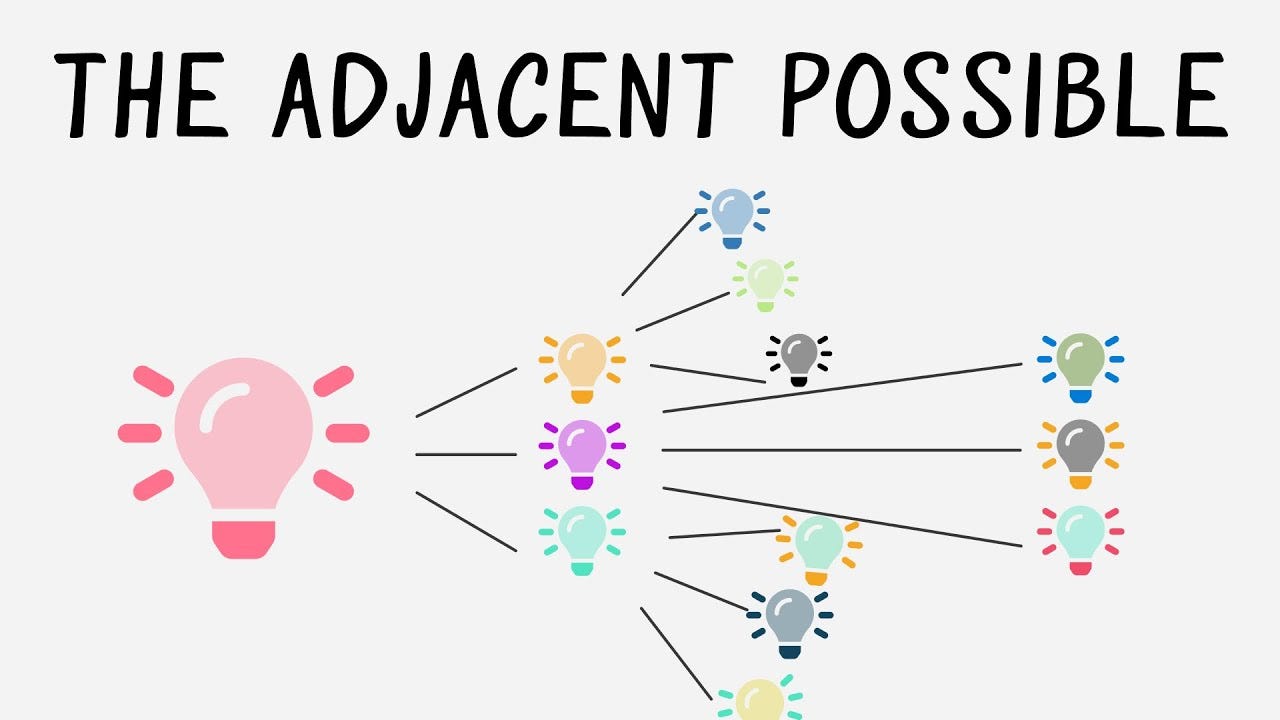Effective note-taking involves integrating new information with your existing knowledge base and mapping it accordingly.
The direction is outside-in.
Note-making on other hand is inside-out.
Begin by reviewing your existing knowledge base notes. They often provide insight into which topics or questions require further exploration and what related concepts need elaboration.
For example, in my earlier note titled "Connecting in Personal Knowledge Management", some of the topics include:
Personal Knowledge
Interpretation
Michael Polanyi
Connecting notes
Each one of them can be explored further in new notes.
You need to select one from many, and if there are many existing notes, there are many more possible topics to select from.
This is a situation aptly described by the idea of the Adjacent Possible, originally proposed by Stuart Kauffman in 2002.
The adjacent possible is a concept that suggests that the current state of a system contains all the elements outside but near it, representing opportunities for the system to expand and evolve. It is often described as a kind of shadow future, hovering on the edges of the present state of things - Perplexity.ai
In his book "Where Good Ideas Come From" Steven Johnson uses the concept to describe how new insights can be generated in previously unexplored areas.
As soon as a new node has been created, the set of Adjacent Possible is updated.
Because the Adjacent Possible is a set, you need to select one of its members, based on which is the most relevant one at the given time. This is in essence John Vervaeke's Relevance Realization.
In summary, note-taking is outside-in, and note-making is inside-out.
In note-taking, we have the placement problem, and in note-making the selection problem. The Adjacent Possible is a realm of creative opportunity.





